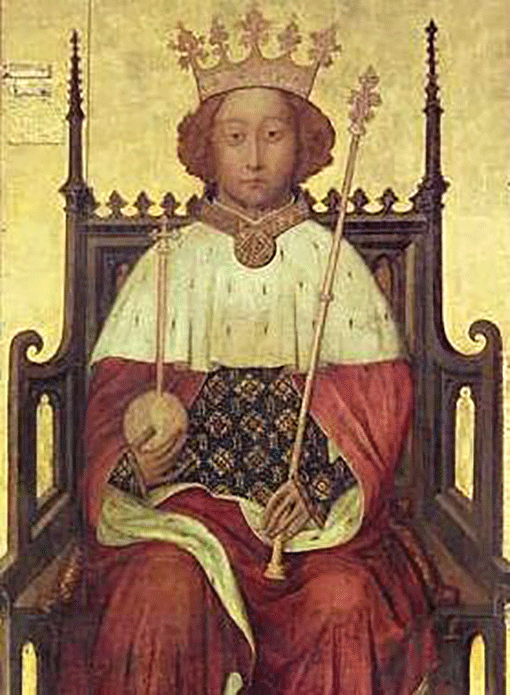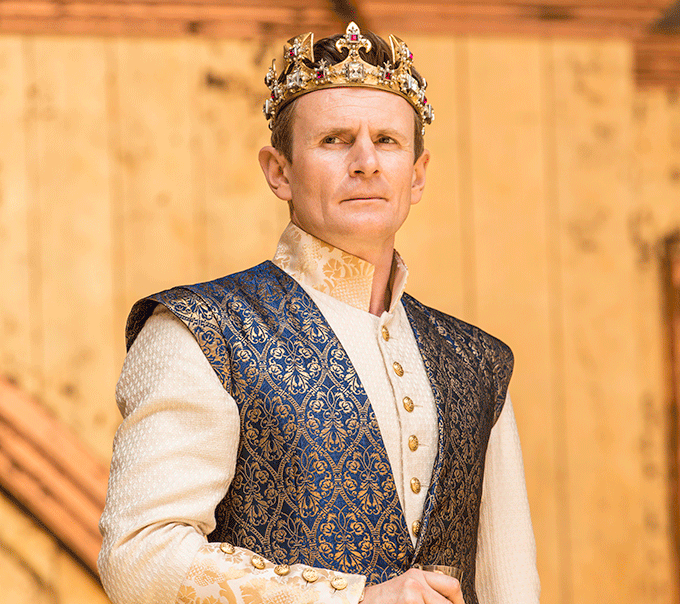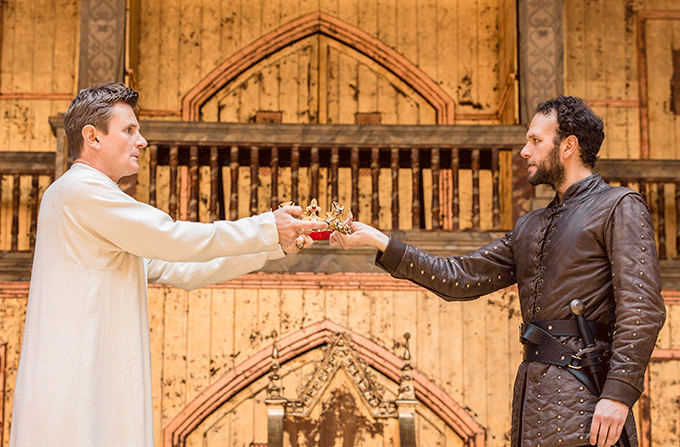King Richard II surrendered power to his cousin Henry Bolingbroke, who went on to reign as King Henry IV. We know him best as Shakespeare’s tragically vain ruler. But where does fact meet fiction?
Richard II (6 January 1367 – c. 14 February 1400) was King of England from 1377 until he was deposed on 30 September 1399. On August 19, 1399, he formally surrendered to his cousin Henry Bolingbroke, relinquishing all power in return for his life.
It’s a series of events we know best as the plot of one of Shakespeare’s greatest tragedies. In the current production of Richard II at Shakespeare’s Globe in London, Charles Edwards plays the king as a whimsically indifferent ruler. But what are the historical facts that inform Shakespeare’s fictional king?
-
Richard was born on 6 January 1367 in Bordeaux, France during the reign of his grandfather Edward III. He was the son of Edward II, known as the Black Prince.
-
He became king at the age of 10, although due to his age the country was ruled largely by his uncle, John of Gaunt.
-
The Peasants’ Revolt of 1381 was the first crisis to beset the young king. He is believed to have bravely rode out to meet the rebels, led by Wat Tyler. The revolt was crushed.

This painting of King Richard II from around 1390 is believed to be the earliest known portrait of an English monarch -
As he got older, Richard took control of government, but he surrounded himself with favourites, who were otherwise unpopular. Parliament demanded the dismissal of these ‘favourites’. When he refused, a commission was created to oversee the king’s activities.
-
In 1397, his uncle, Gloucester was imprisoned and murdered. Richard was granted revenues for life and the powers of parliament were delegated to a committee.
-
In September 1398, the king banished Gaunt’s son Henry Bolingbroke and Thomas Mowbray, Duke of Norfolk.
-
When Gaunt died the next year, Richard confiscated the vast Lancastrian estates, which should have passed to the banished Bolingbroke.

Charles Edwards as Shakespeare’s flamboyant Richard II Credit: Johan Persson/ -
In May 1399, Richard left to campaign in Ireland and Bolingbroke invaded, rallying noble and popular support. Returning to England in August, Richard surrendered without a fight.
-
In September, he abdicated and Bolingbroke ascended the throne as Henry IV.
-
In October, Richard was imprisoned in Pontefract Castle, where he died four months later.






 © 2024
© 2024